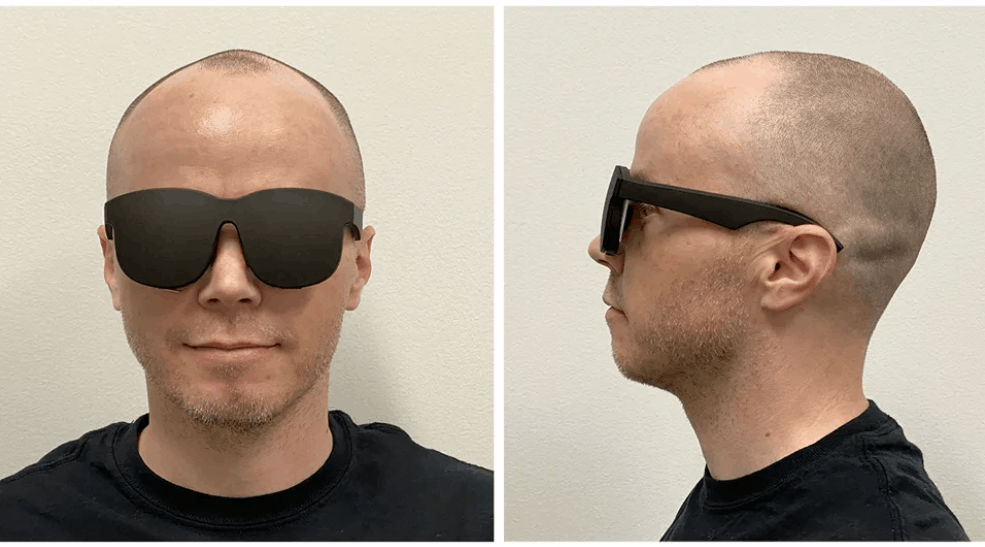
Immersing yourself in virtual reality can feel like a sci-fi fantasy come true, but bulky, cumbersome VR headsets almost make it more trouble than it’s worth. There have been various attempts to slim down VR headsets, such as Dlodlo’s lightweight V One headset and Panasonic’s prototype goggles shown at CES 2020. Now Facebook has revealed its own glasses-like prototype headset with a display measuring 8.9 mm thick — about the same thickness as a smartphone.
In a new research paper entitled “Holographic Optics for Thin and Lightweight Virtual Reality,” Facebook Reality Labs researchers Andrew Maimone and Junren Wang have proposed a VR headset design that replaces the refractive lens with holographic optics and polarization-based optical folding. This allows the headset to be much lighter and more compact, like a strangely thick pair of retro sunglasses.
“These two methods help keep the optics as thin as possible while making the most efficient use of space,” said Facebook Research in a Monday blog post. “We anticipate that such lightweight and comfortable form factors may enable extended VR sessions and new use cases, including productivity.”
VR headsets usually need to be large in order to accommodate a thick, curved lens, which changes the angle of light from the display before it reaches your eyes. This is what makes objects in VR appear further away than they actually are.
Facebook’s new proof-of-concept headset replaces this lens with holographic optics, which look like transparent stickers but bend light in the same way that a lens does. Facebook Research likens it to the holographic image on your credit card, only instead of creating a 3D scene it creates a lens. “The result is a dramatic reduction in thickness and weight,” wrote Facebook Research.
However, holographic optics alone aren’t enough to give Facebook’s headset its slim design. VR headsets also typically require significant distance between the display and the lens so that the image can be focused properly. In order to reduce the gap needed, Facebook’s researchers utilized polarization-based optical folding, also known as “pancake” folding.
To put it simply, pancake folding bounces light back and forth inside a lens a few times before it reaches your eye, increasing the distance the light travels while keeping actual physical distance small. As Facebook’s prototype eschews bulky lenses, its holographic optics do the pancake folding instead.
“Our proposed approach is to design a pancake optic where all the focusing power is performed by holographic optical elements rather than bulk optics,” Maimone and Wang wrote in their paper. Their research will be presented at the virtual SIGGRAPH conference in August.
As exciting as this is, Maimone and Wang note they are only in the research phase. Facebook’s VR headset still has many issues that need to be worked out, and is years away from making it to consumers.
For example, the headset currently uses external components such as light sources and display drivers which would have to be integrated into its small frame. The prototype was also designed to only show Matrix-like shades of green for simplicity, though Facebook’s researchers hope to eventually use laser light sources for an even wider ranger of colors than standard Red Green Blue displays.
Still, Facebook’s relatively svelte VR headset prototype is an exciting step toward more practical VR, and potentially more widespread adoption of the technology.
“Lightweight, high resolution, and sunglasses-like VR displays may be the key to enabling the next generation of demanding virtual reality applications that can be taken advantage of anywhere and for extended periods of time,” wrote Maimone and Wang.
